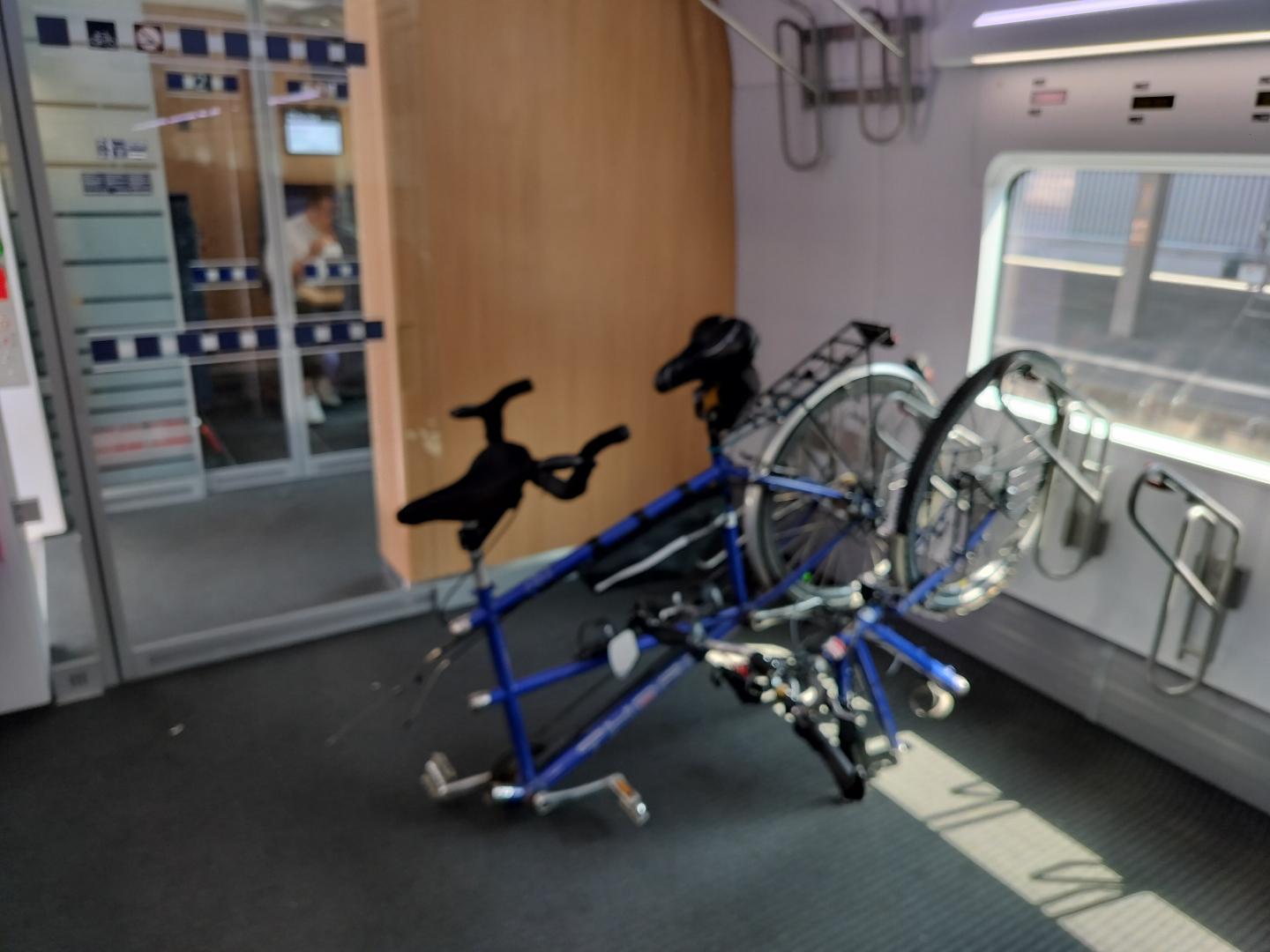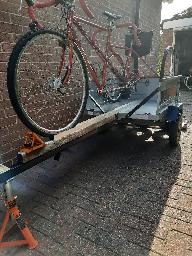All forum posts
Coupled tandems
If you are talking about S&S couplings then they are fairly easy to use. Uncoupling for transport is fairly easy. Re-coupling can be a little more tricky and will probably require two people to do it (one to operate the couplings the other to support one of the uncouple sections)
You need to make sure any cables that cross the coupling points also have cable splitters/couplers.
The tandem will ride just the same as if it didn't have couplings.
Think carefully about where the couplings are though. A lot of coupled tandems leave frame tubes with no support at the coupled end of one of the "halves" when uncoupled. Our does. This is OK but care is required to ensure that the frame tubes are not displaced or "levered" when transporting.
If the bike design allows you to split down to two triangles with joining tubes in between that will be more transportable for flying and for such designs a flight case is often available. Such designs usually require two or more additional couplings so that can make it significantly more expensive.
If you are just wanting to split to transport in a vehicle then designs with two couplings (or 3 if you have a cross tube) would be OK.
Hope that helps. If you have any specific questions when comparing models and coupling placements, just ask and I am sure I or someone will get back to you. If I can I will take a photo of ours couple and uncouple over the next couple of days.
if anyone has a design that splits down to front and rear triangles with coupled middle tubes, perhaps they could post a photo too......
If you are talking about S&S couplings then they are fairly easy to use. Uncoupling for transport is fairly easy. Re-coupling can be a little more tricky and will probably require two people to do it (one to operate the couplings the other to support one of the uncouple sections)
You need to make sure any cables that cross the coupling points also have cable splitters/couplers.
The tandem will ride just the same as if it didn't have couplings.
Think carefully about where the couplings are though. A lot of coupled tandems leave frame tubes with no support at the coupled end of one of the "halves" when uncoupled. Our does. This is OK but care is required to ensure that the frame tubes are not displaced or "levered" when transporting.
If the bike design allows you to split down to two triangles with joining tubes in between that will be more transportable for flying and for such designs a flight case is often available. Such designs usually require two or more additional couplings so that can make it significantly more expensive.
If you are just wanting to split to transport in a vehicle then designs with two couplings (or 3 if you have a cross tube) would be OK.
Hope that helps. If you have any specific questions when comparing models and coupling placements, just ask and I am sure I or someone will get back to you. If I can I will take a photo of ours couple and uncouple over the next couple of days.
if anyone has a design that splits down to front and rear triangles with coupled middle tubes, perhaps they could post a photo too......
We have S&S couplings on our Pino tandem, and I un-couple and re-couple them typically twice a week. The back half of the tandem has a Pletscher Esge twin kick stand which supports it while the front half is being removed or attached, so it can be done by a single person. It is much easier if done on a flat place like a car park – at the side of a road there is often a significant drainage crossfall which makes it harder to line up the two parts of the bike accurately.
We bought a second hand Thorn tandem with S & S couplings about two and a half years ago. Having the ability to split the tandem gave us the confidence to take it on a train both in the UK and in the Netherlands. However on short rail journeys we had not been required to separate the two halves.
We are currently in the Netherlands and on this trip have taken two long rail journeys, firstly from Dusseldorf to Berlin and then the sleeper from Berlin to Rotterdam, on both of these journeys we would not have been able to do unless we split the tandem.
Prior to the train arriving we split the cables (we put the Rohloff into first gear beforehand just in case the gear selector was moved during the train journey) and loosened the S & S couplings half a turn. When the train pulled in, we wheeled the tandem to the bike carriage, remove the panniers and quickly split the frame.
Assembling is a bit more fiddly, and requires patience and understanding as you each think you are the one holding the frame in alignment while your co-rider is not. Make sure that the cable outers are correctly inserted into the frame weld-on lugs (and Rohloff users, make sure that 1st gear is selected before connecting the cables).
Having the S & S couplings has allowed us to use trains and given us the confidence to go further and be more adventurous, knowing that we could always get the train home if necessary.







